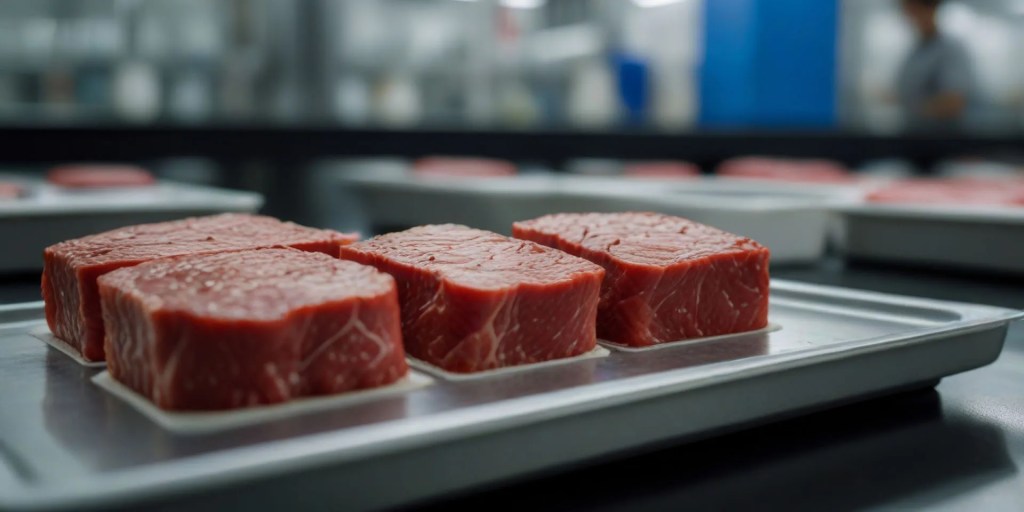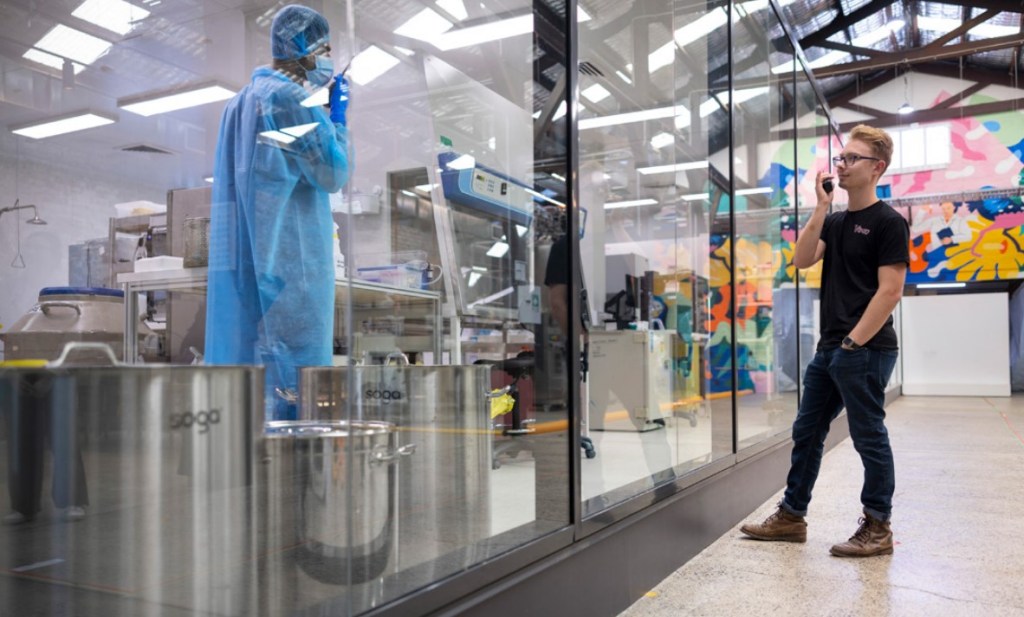A team of Finnish researchers say they may have discovered the solution to the scaling issue in cultivated meat production.
The technological viability of cultivated meat – or the process of isolating and cultivating cells from an animal to produce meat products without killing said animal – is well-established. However, current technologies do not enable sufficient or cheap enough production to make such products available for the mass consumer market, a result critical to fulfilling proponents’ vision of curbing emissions in the global meat industry.
The University of Helsinki’s Helsinki Institute of Life Science (HiLIFE) claims to have found a potential means to solve the issue with the new technology they are developing in the Myocopia project. While the cultivation of meat in bioreactors relies strongly on expensive growth factors to make the cells grow and differentiate, the Myocopia team says its approach controls the same processes by affecting cellular metabolism.

“All companies run into problems at roughly the same point of scaling up production,” says Professor Pekka Katajisto of HiLIFE. “I believe our innovation is going to be a game changer in the emerging industry as a whole.”
Researchers from Katajisto’s laboratory – which is connected to the Centre of Excellence in Stem Cell Metabolism (MetaStem) – studied the metabolism of muscle stem cells, which they say led to an innovation that can keep the cells expanding longer than with current methods.
“The cells can be kept multiplying in a financially viable way until the reactor is full. The cells are then guided to form meat – again using their own metabolism,” Katajisto said.
HiLIFE says the patenting of the technology has already begun, and discussions with venture capitalists will take place in 2025. Olga Balakina, the commercialisation specialist for the Myocopia project, says about 150 companies are operating in the field, which the team is now surveying for potential partners.
“Our top priority is to identify the companies with which we can launch a pilot,” Balakina said. “After two years, we can strive to establish a spinout.”
Myocopia said it is not aiming to become a meat-producing company but rather a tech enabler for the industry, with the potential final product being a ‘cocktail’ that stimulates cell growth in bioreactors, helping for-consumer cultivated meat brands to scale their products.
Breaching the scaling barrier for cultivated meat
McKinsey estimates that, under the proper conditions, the cultivated meat sector could reach 25 billion dollars by 2030 and account for as much as 0.5% of the global meat supply by 2030.
However, in its recent cultivated state of the industry report, the Good Food Institute (GFI) still identified the scaling of the market to commercial volumes as a “monumental task”.

The scale-up process for cultivated meat production is often divided into four phases: lab scale, pilot scale, demonstration scale (industrial), and commercial (commodity) scale. The key focus of the pilot scale is to create a proof of concept, allowing companies and investors to assess raw material and production costs along with product yield.
The scaling issue has heretofore generally restricted cultivated meat consumption by general consumers to exclusive tastings and speciality items at high-end restaurants, with the first cultivated product for retail only launching last month.
However, Myocopia’s goal to serve as a tech enabler aligns with a trend identified by GFI of more start-ups pivoting from end-product manufacturing to supporting consumer-facing brands to grow from the pilot to commodity stage. According to GFI’s report, at least 50 companies identifying as focused on bioprocess design, cell line development, and cell culture media.
In addition, 2023 saw the opening of 10 new cultivated meat facilities across the world, including two large-scale plants—Mosa Meat’s 30,000-square-foot facility in the Netherlands and CellX’s factory in Shanghai.
What’s more, GFI notes that while brands will face the challenge of scaling their processes amid a dry funding environment, more cultivated meat products will likely be sold in 2024 than any other year to date.
To stay up-to-date on the latest industry headlines, sign up to Future Alternative’s enewsletter.
Posted on:


